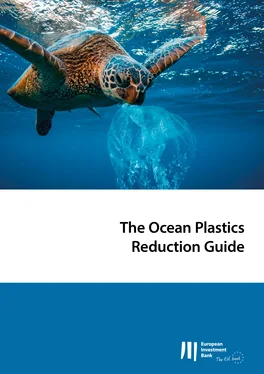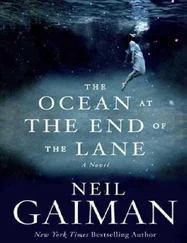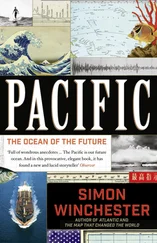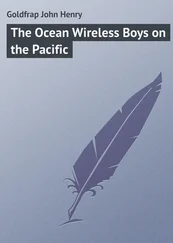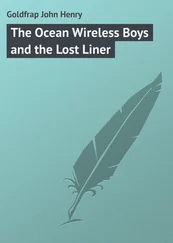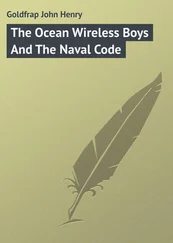The Ocean Plastics Reduction Guide
Здесь есть возможность читать онлайн «The Ocean Plastics Reduction Guide» — ознакомительный отрывок электронной книги совершенно бесплатно, а после прочтения отрывка купить полную версию. В некоторых случаях можно слушать аудио, скачать через торрент в формате fb2 и присутствует краткое содержание. Жанр: unrecognised, на английском языке. Описание произведения, (предисловие) а так же отзывы посетителей доступны на портале библиотеки ЛибКат.
- Название:The Ocean Plastics Reduction Guide
- Автор:
- Жанр:
- Год:неизвестен
- ISBN:нет данных
- Рейтинг книги:4 / 5. Голосов: 1
-
Избранное:Добавить в избранное
- Отзывы:
-
Ваша оценка:
- 80
- 1
- 2
- 3
- 4
- 5
The Ocean Plastics Reduction Guide: краткое содержание, описание и аннотация
Предлагаем к чтению аннотацию, описание, краткое содержание или предисловие (зависит от того, что написал сам автор книги «The Ocean Plastics Reduction Guide»). Если вы не нашли необходимую информацию о книге — напишите в комментариях, мы постараемся отыскать её.
The Ocean Plastics Reduction Guide — читать онлайн ознакомительный отрывок
Ниже представлен текст книги, разбитый по страницам. Система сохранения места последней прочитанной страницы, позволяет с удобством читать онлайн бесплатно книгу «The Ocean Plastics Reduction Guide», без необходимости каждый раз заново искать на чём Вы остановились. Поставьте закладку, и сможете в любой момент перейти на страницу, на которой закончили чтение.
Интервал:
Закладка:
3.3. Institutional challenges
3.4. Financing challenges
4. Technical solutions to ocean plastic pollution
4.1. Plastic reduction and prevention
4.2. Improved solid waste management
4.3. Improved wastewater and stormwater management
5. Regulatory and institutional solutions to ocean plastic pollution
5.1. Regulatory measures
5.2. Market-based instruments and voluntary agreements
6. Clean ocean financing
6.1. Approaches to financing ocean plastics reduction
6.2. The Clean Oceans Initiative
6.3. Other sources of clean ocean financing
7. Impact measurement and monitoring
Annex A The ocean regulatory framework
Annex B The Clean Oceans Initiative target sectors
Annex C Clean ocean initiatives
List of Figures
Figure 1: Plastic waste accumulating in pristine waters Figure 1: Plastic waste accumulating in pristine waters
Figure 2: Plastics in an open dumpsite in Mukdahan Province, Thailand
Figure 3: Plastics washed ashore on a beach next to the Panama Canal
Figure 4: Waterway filled with plastics in Manila, the Philippines
Figure 5: Small crab entangled in a plastic bag
Figure 6: Ghost fishing in an abandoned fishing net
Figure 7: Plastics accumulating on Kuta Beach, Bali
Figure 8: Lanternfish
Figure 9: Old fishing gear
Figure 10: Fresh milk from farm vending machine at farmers market in Ljubljana, Slovenia
Figure 12: Mangrove forest
Figure 13: Garbage filtering system across a river in Cebu City, the Philippines
List of Tables
Table 1: Top ten global rankings for mismanaged plastic wastes in 2010
Abbreviations
ADB Asian Development Bank
AfDB African Development Bank
ASEAN Association of Southeast Asian Nations
CDP Cassa Depositi e Prestiti
COI Clean Oceans Initiative
EIB European Investment Bank
UNDP United Nations Development Programme
Preamble
The objective of this guide is to raise awareness about the crucial socioeconomic, environmental and climate importance of the oceans, and the growing existential threats posed by plastics discharged into and accumulating in the oceans.
The guide illustrates how the lack of or substandard management systems for solid waste and wastewater in many coastal cities, especially in sub-Saharan Africa and Asia, contribute to the problem. It then highlights how the problem will increase unless action is taken due to increasing global production and use of plastics.
After presenting the key regulatory, institutional, technical and financing challenges and barriers to addressing the ocean plastics problem, the guide discusses ways to reduce and prevent plastic discharge by addressing these challenges and barriers.
Given the importance of financing, the guide identifies numerous sources of financing for plastic-reduction projects, including the Clean Oceans Initiative,[1] under which the European Investment Bank and four other European financing institutions support projects that reduce ocean plastics discharge.
The guide is intended to inspire policymakers, planners, project promoters and other stakeholders to engage in addressing the ocean plastics problem and catalyse impactful action and change.
While the guide concentrates on oceans, the problems highlighted are equally important and solutions proposed equally relevant for the seas and for larger lakes and rivers.
1. Introduction
1.1 The oceans
Oceans and seas cover about 75% of the earth’s surface, contain nearly 200 000 identified species,[2] and generate more than 50% of the planet’s oxygen.[3]
Oceans are a global public good benefiting most countries and people, including current and future generations, by providing essential ecosystem services and natural resources, including food and feed; new active ingredients for improved plant, animal and medical products; and renewable energy. As such, oceans play a vital role in the world economy and will be central to the post-COVID-19 global economic recovery.
According to the United Nations Development Programme (UNDP), more than 3 billion people depend on coastal and marine biodiversity for their livelihood, while the global market value of marine and coastal resources and industries is approximately $3 trillion per year (5% of global gross domestic product).[4] Ocean-based industries make a significant contribution to employment growth. The sector is projected to provide about 40 million full-time equivalent jobs by 2030.[5] Strong growth is expected in tourism, aquaculture, fish processing, offshore wind, shipbuilding and repair.
The oceans are the world’s largest active carbon reservoir, absorbing about 30% of human CO 2emissions to the atmosphere.[6] Oceans also absorb a large share of the excess heat caused by increasing greenhouse gas emissions into the atmosphere. As such, oceans are essential in regulating the global climate.
1.2 Threats to the oceans
Oceans face several threats, with the increasing accumulation of plastics being one of the most alarming. There are more than 5 trillion pieces of plastic afloat in the oceans.[7] About 8 million tonnes of plastic litter[8] and 1.5 million tonnes of microplastics are discharged into the oceans every year,[9] primarily from coastal or riverine cities with limited waste and wastewater collection and no or substandard systems of waste disposal and wastewater treatment. Rivers collectively discharge between 0.47 million and 2.75 million tonnes of plastics into the oceans per year.[10]
Just ten rivers, eight in Asia and two in Africa, carry about 93% of river-transported plastics to the oceans.[11] The Yangtze in China discharges approximately 1.5 million tonnes of plastic waste into the Yellow Sea every year,[12] while the Indus and the Ganges flowing through India carry the second and sixth highest quantities of plastic wastes to the oceans.[13] The other rivers on this list are the Amur, Hai, Pearl, Mekong and Yellow River in Asia, and the Niger and Nile in Africa.
Ocean plastics are discharged in different forms, most common of which are single-use items such as bags, water bottles, straws, food containers and cutlery. These items are used and discarded quickly but can circulate in the oceans for centuries if not properly managed on land. A large share of the ocean plastics break down into tiny pieces or microplastics that further endanger marine ecosystems.
Oceans also face other threats, such as coastal pollution, for example from nutrients and pollutants in untreated wastewater or from unsustainable agriculture; oil spill; overfishing; acidification; and global warming. Untreated wastewater from industrial plants and factories, and agrochemical run-off end up in the oceans, resulting in oxygen depletion that threatens marine plants and fish. In addition, overfishing has been identified as a major challenge in most parts of the world. The United Nations Food and Agriculture Organization estimates that close to 31.4% of fish stocks are either fished to capacity or overfished.[14] Consequently, the ocean’s natural assets are under enormous pressure, with the health of many ocean ecosystems already in steep decline.[15]
1.3 The need for ocean conservation
Conservation and sustainable use of the world’s oceans are recognised in UN Sustainable Development Goal 14 (Life below Water). Moreover, many countries, international organisations and companies producing or using plastics have announced their priority given to conserving and protecting the oceans, recognising the significance of the ocean environment for the economy and climate regulation. There is growing realisation that marine litter greatly reduces the total economic value of the marine environment.
Читать дальшеИнтервал:
Закладка:
Похожие книги на «The Ocean Plastics Reduction Guide»
Представляем Вашему вниманию похожие книги на «The Ocean Plastics Reduction Guide» списком для выбора. Мы отобрали схожую по названию и смыслу литературу в надежде предоставить читателям больше вариантов отыскать новые, интересные, ещё непрочитанные произведения.
Обсуждение, отзывы о книге «The Ocean Plastics Reduction Guide» и просто собственные мнения читателей. Оставьте ваши комментарии, напишите, что Вы думаете о произведении, его смысле или главных героях. Укажите что конкретно понравилось, а что нет, и почему Вы так считаете.
